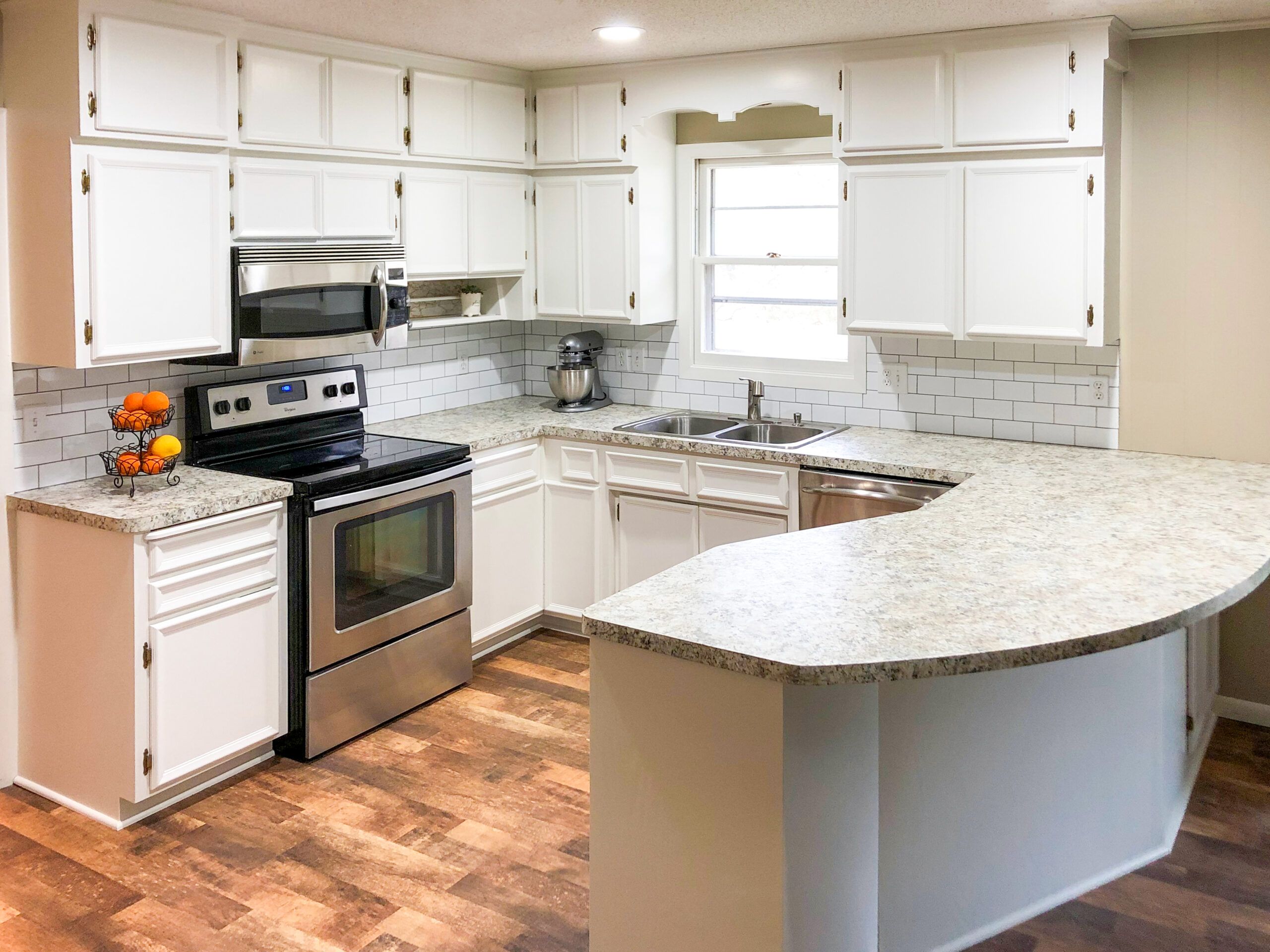How to paint kitchen cabinets without sanding? Sounds like kitchen cabinet wizardry, doesn’t it? Forget the back-breaking sanding – we’re diving headfirst into a world of paint-splattered bliss where perfectly smooth cabinets emerge from a surprisingly simple process.
Prepare for a delightful journey filled with less elbow grease and more glorious, glossy results. This isn’t your grandma’s cabinet painting; this is a revolution!
We’ll navigate the thrilling seas of primer selection, paint application techniques (brush? roller? spray gun? Oh, the choices!), and conquer the challenges of tricky details and hard-to-reach spots. By the end, your kitchen cabinets will be so stunning, they’ll practically be begging for a starring role in a home decor magazine.
Buckle up, buttercup, it’s time to transform your kitchen!
Painting Kitchen Cabinets Without Sanding: A Surprisingly Smooth Operation
Let’s face it, sanding kitchen cabinets is about as appealing as a root canal. It’s dusty, time-consuming, and frankly, a bit barbaric. But fear not, fellow DIY enthusiasts! Painting your kitchen cabinets without sanding is entirely possible, and surprisingly easy.
This guide will walk you through the process, turning your kitchen transformation from a Herculean task into a manageable, even enjoyable, weekend project. Prepare to be amazed by the results and the time you’ll save!
Benefits of Painting Kitchen Cabinets Without Sanding
Skipping the sanding step offers several key advantages. First and foremost, it saves you a significant amount of time and effort. No more battling dust bunnies or wrestling with stubborn sanding blocks. Secondly, it’s much less messy. Sanding creates a considerable amount of dust, requiring meticulous cleanup.
Finally, it’s gentler on your cabinets, reducing the risk of damaging delicate details or creating unwanted scratches.
Necessary Supplies for Painting Kitchen Cabinets Without Sanding
Gather your arsenal of paint-related weaponry before you begin! You’ll need a few key supplies to conquer this project successfully. Don’t worry, it’s not as daunting as it sounds.
- Deglosser
- Cabinet cleaner
- Painter’s tape
- Putty knife
- Wood filler (various types)
- Primer specifically designed for cabinets (oil-based or bonding primer recommended)
- Cabinet paint (latex or oil-based, depending on your preference and existing finish)
- Paintbrushes (various sizes)
- Paint roller and tray
- Drop cloths
- Microfiber cloths
Surface Preparation Techniques
Proper preparation is key to a flawless finish. Think of it as laying the foundation for a magnificent painting. A well-prepared surface will ensure the paint adheres properly and lasts for years to come.
Thorough cleaning is the first step. Remove grease, grime, and any loose particles using a degreasing cleaner. Next, degloss the surfaces using a deglosser to ensure proper adhesion of the primer. Finally, fill any minor imperfections using wood filler.
Allow adequate drying time before proceeding.
| Filler Type | Application | Drying Time | Suitability for Cabinets |
|---|---|---|---|
| Wood filler (paintable) | Spatula or putty knife | 30-60 minutes | Excellent, fills larger gaps |
| Spackling paste | Putty knife | 15-30 minutes | Good for minor imperfections |
| Caulk | Caulk gun | 30-60 minutes | Ideal for gaps and seams |
| Epoxy filler | Spatula | 24 hours+ | Excellent for large cracks and repairs |
Primer Selection and Application
Choosing the right primer is crucial for a successful paint job. A bonding primer is highly recommended, especially when painting over existing finishes without sanding. It ensures excellent adhesion and prevents the old finish from bleeding through.
Apply the primer in thin, even coats, using a brush or roller. Allow each coat to dry completely before applying the next. Multiple thin coats are better than one thick coat, ensuring even coverage and preventing drips.
Oil-based primers offer superior adhesion and blocking properties, while water-based primers are easier to clean up. The choice depends on your preference and the type of paint you plan to use.
Paint Selection and Application
For kitchen cabinets, choose a paint formulated for durability and easy cleaning. Semi-gloss or satin finishes are popular choices as they are easy to wipe clean and resist scratches.
- Brush:Ideal for detailed work and corners. Provides excellent control and a smooth finish. Requires more time and effort.
- Roller:Faster coverage for larger surfaces. Requires a smooth, even application to avoid streaks. Less control than a brush.
- Sprayer:Fastest application method. Provides an even finish, but requires careful preparation and cleanup. Risk of overspray.
Sample Paint Schedule:
- Coat 1:Apply a thin, even coat of paint. Allow to dry for at least 4 hours.
- Coat 2:Apply a second thin, even coat. Allow to dry for at least 4 hours.
- Coat 3 (optional):For added durability and depth of color, apply a third coat. Allow to dry for at least 24 hours before handling.
Dealing with Specific Cabinet Issues, How to paint kitchen cabinets without sanding
Even without sanding, you might encounter some challenges. Intricate details and carvings may require careful brushwork to ensure even coverage. For hard-to-reach areas, consider using a small brush or a foam brush.
If you encounter drips or runs, don’t panic! Allow the paint to dry completely, then gently sand the area smooth before applying another thin coat.
Protecting the Painted Cabinets

Once the paint is dry, protect your freshly painted cabinets from dust and damage. Keep the area well-ventilated and avoid touching the surfaces until the paint is completely cured.
Regular cleaning with a damp cloth will help maintain the appearance of your cabinets. Avoid harsh chemicals and abrasive cleaners.
Visual Aids and Examples

A well-prepared surface will be clean, smooth, and free of any loose particles or imperfections. A poorly prepared surface will have visible imperfections, grease, and loose paint, leading to uneven paint application and poor adhesion.
Correct Paint Application Technique (Brush):Imagine a smooth, overlapping stroke, like laying down a thin layer of paint. The brush should be held at a slight angle, with gentle, even pressure. Avoid harsh strokes or excessive pressure, which can lead to brush marks.
The visual representation would show a smooth, even coat of paint with no visible brush strokes.
When investigating detailed guidance, check out using stencils for wall patterns now.
One Coat vs. Multiple Coats:A single coat of paint will appear thin and uneven, with the underlying surface showing through. Multiple coats will create a rich, even color with greater depth and durability. The difference is stark, showcasing a significant improvement in overall appearance and quality.
Final Conclusion: How To Paint Kitchen Cabinets Without Sanding
So there you have it – a kitchen cabinet makeover without the sanding-induced wrist ache! From cleaning and deglossing to the final flourish of protective sealant, you’ve conquered the art of painting cabinets sans sandpaper. Your kitchen now boasts freshly painted, stunning cabinets, a testament to your DIY prowess.
Go forth and bask in the glory of your newly transformed space! And remember, if your friends ask how you achieved such perfection, simply whisper, “Magic.” (Or, you know, you can tell them about this guide.)
Key Questions Answered
What if I have some seriously stubborn grease stains?
Don’t fret! A good degreaser, like TSP (trisodium phosphate), will be your best friend. Follow the product instructions carefully for best results.
How long should I let the paint cure before using the cabinets?
Patience, young padawan! Allow at least 24-72 hours for the paint to fully cure, depending on the paint type and climate. It’s worth the wait to avoid those dreaded chips and scratches.
Can I use this method on all types of cabinet finishes?
While this method works well on many finishes, heavily textured or damaged surfaces may require more prep work. Always test a small inconspicuous area first.
What if I mess up?
Don’t panic! Minor imperfections can often be sanded lightly (we know, we said no sanding, but a tiny bit is okay!) and repainted. Embrace the imperfections; they add character!




